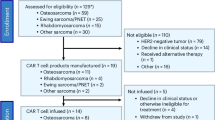Abstract
Dexrazoxane (DEX) prevents the formation of free radical, lipid peroxidation and cardiotoxicity caused by anthracyclines. Due to a concern about its possible interference with anthracyclin cytotoxicity, the in vitro effect of DEX on daunorubicin (DNR) cytotoxicity, cell cycle and induction of apoptosis by annexin-V was investigated. The sensitivity to DEX, DNR and their combination was tested by the MTT assay in human promyelocytic leukemia HL-60, the erythroid blast crisis CML K562 cell lines and in 45 children with ALL and AML. Cell cycle analysis and annexin-V expression were performed by flow cytometry. It has been observed that DEX itself weakly, but significantly caused cytotoxicity in both cell lines and in patient samples, especially in initial ALL samples. DEX sensitized K562 and HL60, but not patient samples, to cytotoxicity of DNR. The percentage of necrotic/apoptotic cells, as detected in cell cycle analysis and annexin V staining, was higher after exposure to DEX ± DNR, when compared to respective samples not treated with DEX, in both cell lines but not in patient samples. Expression of annexin V induced by DEX in both cell lines was enlarged, regardless of the presence of DNR. This difference was not observed in patient samples, however, the number of cells expressing annexin V was higher after exposure to DEX ± DNR in comparison to respective samples not treated with DEX. In conclusion, it seems that DEX possibly has no impact on the sensitivity of childhood leukemic blasts to DNR, however, has weak cytotoxic properties itself.
This is a preview of subscription content, access via your institution
Access options
Subscribe to this journal
Receive 12 print issues and online access
$259.00 per year
only $21.58 per issue
Buy this article
- Purchase on Springer Link
- Instant access to full article PDF
Prices may be subject to local taxes which are calculated during checkout




Similar content being viewed by others
References
Hasinoff BB, Abram ME, Chee GL, Huebner E, Byard EH, Barnabe N, Ferrans VJ, Yu ZX, Yalowich JC . The catalytic DNA topoisomerase II inhibitor dexrazoxane (ICRF-187) induces endopolyploidy in Chinese hamster ovary cells J Pharmacol Exp Ther 2000 295: 474–483
Vaidyanathan S, Boroujerdi M . Interaction of dexrazoxane with red blood cells and hemoglobin alters pharmacokinetics of doxorubicin Cancer Chemother Pharmacol 2000 46: 93–100
Savasan S, Ozdemir O, Buck S, Ravindranath Y . Differential effect of dexrazoxane on the in vitro cytotoxicity of topoisomerase-II inhibitors by the cell type in childhood leukemias Leukemia 2001 15: 489 (Abstr. O32)
Styczynski J, Pieters R, Huismans DR, Schuurhuis GJ, Wysocki M, Veerman AJP . In vitro drug resistance profiles in adult versus childhood acute lymphoblastic leukaemia Br J Haematol 2000 110: 813–818
Sharpe HBA, Field EO, Hellmann K . Mode of action of the cytostatic agent ‘ICRF 159’ Nature 1970 226: 524–526
Synold TW, Tetef ML, Doroshow JH . Antineoplastic activity of continuous exposure to dexrazoxane: potential new role as a novel topoisomerase II inhibitor Semin Oncol 1998 25 (4 Suppl. 10): 93–99
Scambia G, Della Bitta R, Benedetti Panici P, De Vincenzo R, Contu G, Ercoli A, Bonanno G, Pierelli L, Mancuso S . Bisdioxypiperazine, (+)-1,2-Bis(3,5-dioxypiperazinyl-1-yl)propane (ICRF 187), enhances the antiproliferative effect of cisplatin on human ovarian cancer cells Gynecol Oncol 1995 57: 16–22
Hochster HS . Clinical pharmacology of dexrazoxane Semin Oncol 1998 25 (4 Suppl. 10): 37–42
Hasinoff BB, Kuschak TI, Creighton AM, Fattman CL, Allan WP, Thampatty P, Yalowich JC . Characterization of a Chinese hamster ovary cell line with acquired resistance to the bisdioxopiperazine dexrazoxane (ICRF-187) catalytic inhibitor, of topoisomerase II Biochem Pharmacol 1997 53: 1843–1853
Hasinoff BB, Chee GL, Thampatty P, Allan WP, Yalowich JC . The cardioprotective and DNA topoisomerase II inhibitory agent dexrazoxane (ICRF-187) antagonizes camptothecin-mediated growth inhibition of Chinese hamster ovary cells by inhibition of DNA synthesis Anti-Cancer Drugs 1999 10: 47–54
Swain SM, Whaley FS, Gerber MC, Ewer MS, Bianchine JR, Gams RA . Delayed administration of dexrazoxane provides cardioprotection for patients with advanced breast cancer treated with doxorubicin-containing therapy J Clin Oncol 1997 15: 1333–1340
Sargent JM, Williamson CJ, Yardley C, Taylor CG, Hellmann K . Dexrazoxane significantly impairs the induction of doxorubicin resistance in the human leukaemia line, K562 Br J Cancer 2001 84: 959–964
Hasinoff BB, Abram ME, Barnabe N, Khelifa T, Allan WP, Yalowich JC . The catalytic DNA topoisomerase II inhibitor dexrazoxane (ICRF-187) induces differentiation and apoptosis in human leukemia K562 cells Mol Pharmacol 2001 59: 453–461
Sawyer DB, Fukazawa R, Arstall MA, Kelly RA . Daunorubicin-induced apoptosis in rat cardiac myocytes is inhibited by dexrazoxane Circ Res 1999 84: 257–265
Weiss G, Loyevsky M, Gordeuk VR . Dexrazoxane (ICRF-187) Gen Pharmacol 1999 32: 155–158
Herman EH, Zhang J, Chadwick DP, Ferrans VJ . Comparison of the protective effects of amifostine and dexrazoxane against the toxicity of doxorubicin in spontaneously hypertensive rats Cancer Chemother Pharmacol 2000 45: 329–334
Acknowledgements
This work was supported by State Committee for Scientific Research grant KBN 6 PO5E 082 21 and Cancer Children's Foundation of Bydgoszcz, Poland. The study was performed in Laboratory of Clinical and Experimental Medicine, Department of Pediatric Hematology and Oncology, Medical University, Bydgoszcz, Poland. The authors thank The Board of Polish Childhood Leukemia Study Group for sending patient samples. The Board members are: Anna Balcerska, Walentyna Balwierz, Alicja Chybicka, Jacek Wachowiak, Jerzy R Kowalczyk, Michal Matysiak, Roma Rokicka-Milewska, Danuta Sonta-Jakimczyk and Mariusz Wysocki.
Author information
Authors and Affiliations
Rights and permissions
About this article
Cite this article
Styczynski, J., Wysocki, M., Balwierz, W. et al. Dexrazoxane has no impact on sensitivity of childhood leukemic blasts to daunorubicin. Leukemia 16, 820–825 (2002). https://doi.org/10.1038/sj.leu.2402474
Received:
Accepted:
Published:
Issue Date:
DOI: https://doi.org/10.1038/sj.leu.2402474



